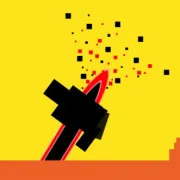Make domino deduction your daily brain ritual
Keep exploring
Keep the momentum going with more arena racers, action trials, and puzzle standouts.

Level Devil 3 – Outsmart Every Trap

Climb the office, one punch at a time

Puppet-stage chaos with Shadow Milk Cookie

Every routine is graded—how will you measure up?

Play Wacky Flip in your browser

Answer the Call in Hotline Miami

Jump straight into Untime—no downloads, just play

Ride, Balance, and Score Big in Wheelie Life 2

Play Underwheels Online

Dodge, adapt, and conquer in Level Devil 4
Domino logic that fits perfectly into your coffee break
Discover a crisp, daily challenge built on classic domino reasoning
Pips NYT turns simple black and white tiles into a clean, thinky ritual that rewards patience and pattern recognition. Each board displays numbered hints along the borders that describe how many pip halves belong in a slice of the grid. Your job is to place dominoes so every dot connects to its twin and every region count is satisfied. Because feedback comes from the counts as well as from the way dominoes must pair, solving feels tactile even on a screen. Pips NYT encourages you to slow down, scan edges, and commit to tidy logic rather than guesswork.
Why this puzzle hooks new solvers and veterans alike
Players who enjoy deduction games will immediately appreciate how constraints layer without becoming fussy. Early moves often come from obvious extremes, where a region that allows zero pips must remain blank and a region that requires the maximum becomes a magnet for placements. Advanced progress comes from spotting consequences: once a tile with a particular value sits in a segment, the same value cannot repeat elsewhere in that tile’s reach. As you internalize these relationships, Pips NYT reveals a satisfying rhythm of confirmation, elimination, and careful penciling. The interplay between global counts and local adjacency makes every board feel balanced yet fresh, and Pips NYT sustains that balance day after day.
How to read the grid efficiently
Begin by sweeping the outer clues, then inspect intersections where two segments cross. A corner with a strict total often locks the shape of nearby placements. If a segment demands many pips while its neighbor demands very few, you can infer boundaries that guide early domino orientations. Mark provisional candidates before you commit; tentative notes keep your thinking flexible while preserving the logic trail. Pips NYT rewards this methodical approach because the solution space contracts gracefully when you respect both the counts and the requirement that dots must form complete tiles. Over time, your eye will move from counting to patterning, and Pips NYT will feel less like arithmetic and more like sculpting space.
Momentum without guesswork
The most efficient solvers build chains of deductions. Place a certain tile, and a cascade of consequences ripples outward: one region’s quota shrinks, another becomes impossible to overfill, and a third suddenly has only one orientation that can satisfy all constraints. When you hit a lull, flip the perspective. Ask which placements are forbidden rather than which are required. Use impossibility to box in certainty. This practice keeps the board flowing and protects you from errors that can hide for minutes. Pips NYT is designed so that careful reasoning always wins; brute-force guessing is slower and less satisfying than noticing a subtle count or a forced pairing. As that habit sets in, Pips NYT becomes a daily workshop for precise thinking.
Strategies that scale from small boards to tricky layouts
Not all grids reveal themselves at the same pace. On minimal layouts, you may finish by chaining a few obvious extremes. On thornier designs, the path might depend on parity, where odd or even totals force specific orientations. Train yourself to check both the total number of pips left in a region and how those pips could physically connect. If two halves cannot meet without crossing a boundary, eliminate that route and free the board for a cleaner configuration. The more you practice, the more you will spot near-forced shapes that turn ambiguity into progress. Pips NYT shines here because each lesson transfers to the next day’s challenge, and Pips NYT quietly teaches you to think in tiles rather than single cells.
Keyboard, mouse, or touch: a puzzle that feels good anywhere
The interface emphasizes smooth placement and quick revisions, so mistakes never feel punishing. Drag tiles to test an idea, then lift them away if a count goes off. Use light pencil marks to track candidates before you commit to ink. On mobile, gentle taps keep your focus on patterns rather than menus, and on desktop, accurate cursor control makes micro-adjustments second nature. Because the logic is self-contained and the ruleset is compact, Pips NYT is equally at home on a commuting phone session or a relaxed evening at a laptop. That portability helps Pips NYT become a habit: a small window of clarity that resets your attention.
Mindset tips that prevent stalls
When you slow down, return to first principles. Every tile must pair two halves; every region must respect its count; no pip value can clone itself in a way that breaks adjacency constraints. If a move threatens any one of these rules, undo it and ask what the contradiction teaches you. Contradictions are not setbacks; they are signposts that steer the solution. Keep an eye on near-complete regions where one placement will lock the total. Locking a total often clarifies two or three surrounding segments. Pips NYT thrives on these domino effects, and Pips NYT turns them into miniature victories that keep you engaged.
Comparisons that help transfer skills
If you come from Sudoku, you already understand how local deductions can ripple through a board. The difference is that this puzzle asks you to think in two-cell units instead of single numbers. From Kakuro, you inherit respect for totals; from nonogram grids, you borrow the habit of marking impossibilities and working the edges inward. Bring those instincts here, and you will settle into a flow where each small certainty expands the possible placements nearby. Pips NYT consolidates these familiar habits into a streamlined format that avoids bloated rule sets. Because of that restraint, Pips NYT remains approachable while still offering depth for solvers who want to shave seconds off their clear times.
Building a daily routine that actually sticks
Consistency is the secret to improving. Choose a short window in your day and open a new grid without fail. Start with a gentle scan for extremes, pencil candidates at intersections, and commit to placements only when you can justify them with counts and adjacency. Record the techniques that unlocked today’s board, then challenge yourself to find the first moment you could have seen them. This reflective loop converts casual play into measurable growth. Over weeks, you will watch patterns surface faster and errors fade. Pips NYT becomes both a quick mental warm-up and a personal progress log, and Pips NYT delivers that sense of growth with almost no friction.
A welcoming challenge with staying power
Because each puzzle resolves through logic rather than memorized tricks, the experience stays fresh. Freshness also comes from human-friendly pacing: boards are long enough to satisfy but short enough to finish in a break. If you are new, start slowly and trust the counts; if you are experienced, push for cleaner lines of inference and fewer corrections. The result is the same: a compact challenge that strengthens attention, spatial reasoning, and confidence in step-by-step deduction. Pips NYT is proof that minimal components can produce engrossing play, and Pips NYT earns a permanent slot in your daily rotation.
Make domino deduction your daily brain ritual is ready to play
Solve elegant domino grids with numbered edge clues in Pips NYT. Drag, pencil, and deduce through a fresh daily puzzle that sharpens logic in minutes.
Share Make domino deduction your daily brain ritual
Spread the word, invite friends, or bookmark this page to revisit the story whenever you need it.